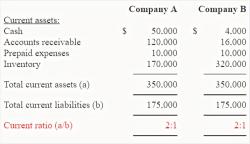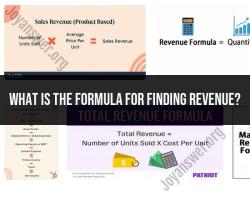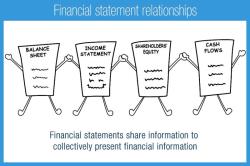Are U.S. Savings Bonds good investments?
U.S. Savings Bonds can be a suitable investment option for certain individuals, but whether they are a "good" investment depends on your financial goals, risk tolerance, and investment preferences. Here are some pros and cons of U.S. Savings Bonds to help you evaluate whether they align with your financial objectives:
Pros of U.S. Savings Bonds:
Safety: U.S. Savings Bonds are considered one of the safest investments available because they are backed by the U.S. government. You are virtually guaranteed to receive the principal and interest owed to you.
Low Risk: They are low-risk investments, making them suitable for conservative investors who prioritize capital preservation over high returns.
Tax Advantages: Interest earned on U.S. Savings Bonds is exempt from state and local income taxes, and federal taxes can often be deferred until you redeem the bonds or they reach maturity.
Accessibility: U.S. Savings Bonds can be easily purchased online through the U.S. Department of the Treasury's website or at financial institutions, making them accessible to most investors.
Fixed Interest Rates: Series I Savings Bonds offer inflation protection because their interest rates are adjusted for inflation, ensuring that your investment keeps pace with rising prices.
Cons of U.S. Savings Bonds:
Low Returns: U.S. Savings Bonds typically offer lower returns compared to other investments like stocks, mutual funds, or corporate bonds. They may not keep up with inflation, especially when interest rates are low.
Lack of Liquidity: Most U.S. Savings Bonds have a minimum holding period, during which you cannot redeem them without incurring a penalty. This can limit your access to your money when you need it.
Interest Rate Risk: Once purchased, the interest rate on a U.S. Savings Bond is fixed for the life of the bond. If market interest rates rise significantly, your bond's yield may become less competitive.
No Capital Gains Tax Benefit: Unlike some other investments, U.S. Savings Bonds do not offer the potential for capital gains, which can limit your overall return on investment.
Limited Investment Cap: There are annual purchase limits on U.S. Savings Bonds, which may not meet the needs of investors with larger portfolios.
Inflation Risk (for Series EE Bonds): Series EE Savings Bonds do not offer inflation protection, meaning that their purchasing power may erode over time due to inflation.
In summary, U.S. Savings Bonds can be a good investment for individuals seeking safety, tax advantages, and low-risk options. They are particularly suitable for emergency funds or conservative portfolios. However, their relatively low returns may not meet the long-term growth needs of investors with higher-risk tolerances or those seeking higher returns. Before investing in U.S. Savings Bonds or any other financial instruments, it's essential to consider your financial goals, time horizon, and risk tolerance to determine whether they align with your overall investment strategy.
Assessing the Viability of U.S. Savings Bonds as Investments
U.S. savings bonds are debt securities issued by the U.S. government. They are considered to be one of the safest investments available, as they are backed by the full faith and credit of the U.S. government. Savings bonds can be a good option for investors who are looking for a low-risk investment with guaranteed returns.
However, it is important to note that savings bonds also have some drawbacks. For example, their interest rates are typically lower than other types of investments, such as stocks and bonds. Additionally, savings bonds must be held for at least 12 months before they can be redeemed without penalty.
Overall, the viability of U.S. savings bonds as investments depends on your individual financial goals and risk tolerance. If you are looking for a safe and secure investment with guaranteed returns, savings bonds can be a good option. However, if you are looking for an investment with the potential for higher returns, you may want to consider other options.
Pros and Cons of Investing in U.S. Savings Bonds
Here are some of the pros and cons of investing in U.S. savings bonds:
Pros:
- Safe and secure investment backed by the full faith and credit of the U.S. government
- Guaranteed returns
- Easy to purchase and redeem
- Tax-advantaged benefits for education expenses
Cons:
- Low interest rates compared to other types of investments
- Must be held for at least 12 months before redemption without penalty
- Limited liquidity
Making Informed Financial Decisions: U.S. Savings Bonds Considerations
When making informed financial decisions about investing in U.S. savings bonds, it is important to consider the following factors:
- Your financial goals: What are you saving for? Retirement? Education? A down payment on a house? Once you know your financial goals, you can determine how long you need to invest and how much risk you are willing to take.
- Your risk tolerance: How much risk are you comfortable with? Savings bonds are a low-risk investment, but they also offer lower returns. If you are looking for the potential for higher returns, you may want to consider other investment options with more risk.
- Your time horizon: How long do you need to invest? Savings bonds must be held for at least 12 months before redemption without penalty. If you need access to your money sooner than that, you may want to consider other investment options.
- Your investment portfolio: What other investments do you have? Savings bonds can be a good part of a diversified investment portfolio. However, it is important to make sure that your portfolio is aligned with your financial goals and risk tolerance.
If you are considering investing in U.S. savings bonds, it is important to talk to a financial advisor to get personalized advice. They can help you assess your individual needs and make sure that savings bonds are the right investment for you.













